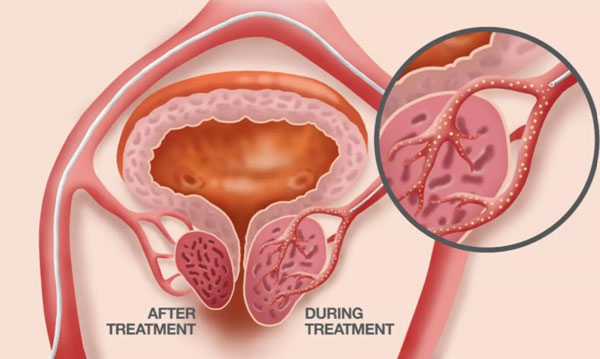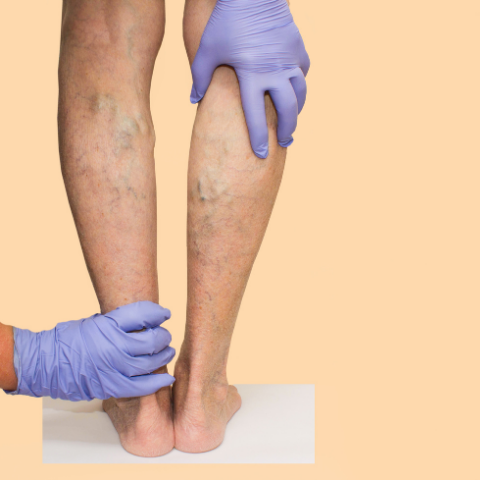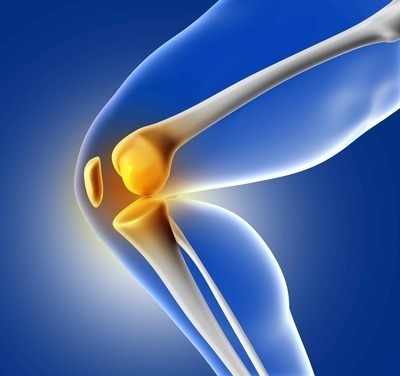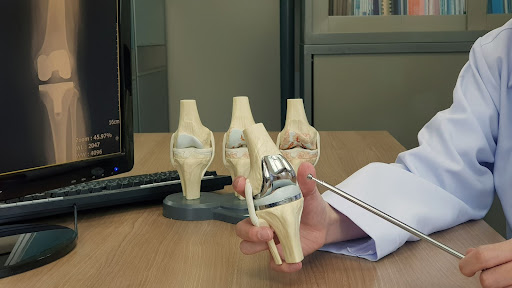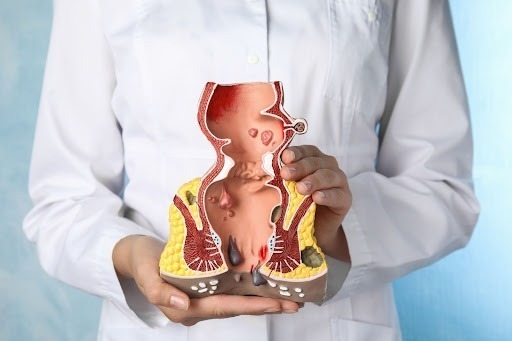Piles (Hemorrhoids) / Proctology
Understanding The 4 Stages of Piles

by admin
19th May 2019
5 minutes read
Hemorrhoids (commonly known as Babaseer in Hindi) are swollen veins in the rectum or anus that can cause pain, itching, and bleeding. They develop in stages, and recognizing the severity can help you seek the right treatment.
When a hemorrhoid forms inside the rectum, it is known as piles. Piles or hemorrhoids are swollen veins of the lower anus and rectum. This kind of swelling can lead to localized inflammation of the other tissues, leading to extreme discomfort.
Coming to the types of hemorrhoids, there are internal and external hemorrhoids. An internal hemorrhoid takes form when the veins within the rectum swell up. They can arise because of various reasons. External hemorrhoids form small lumps on the anus’ outside edge. They are extremely itchy. They can even be painful upon the formation of a blood clot.
There are 4 stages reflecting the seriousness of the condition. The stage 1 is mildly serious with no swelling. And the stage 4 shows a prolapsed hemorrhoid with high inflammation in the surrounding area.
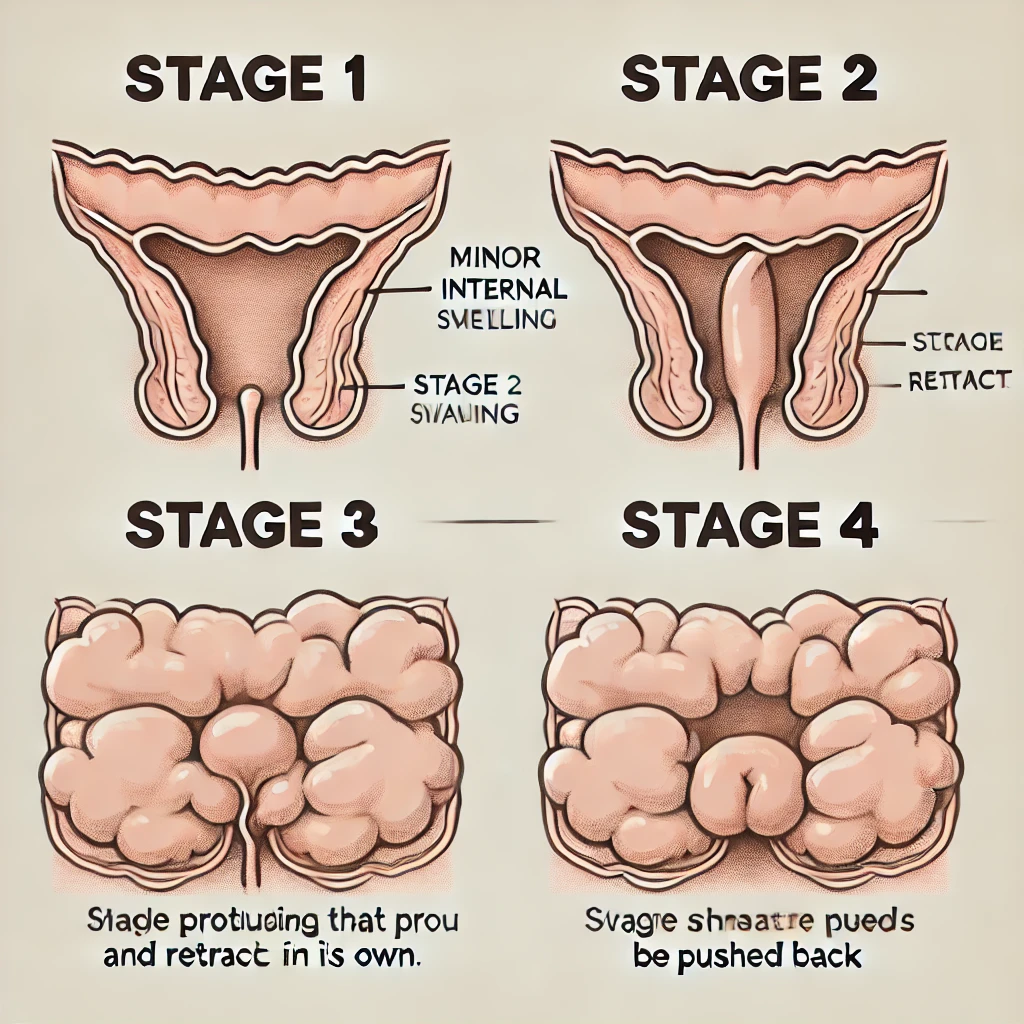
Stage 1: Internal Hemorrhoids with Mild Symptoms
At this stage, internal hemorrhoids are located inside the rectum and typically cause mild discomfort. You may experience light bleeding during bowel movements, but the hemorrhoids are not visible. At this stage, high-fiber diets, drinking plenty of water, and avoiding strain during bowel movements can help manage symptoms.
Stage 2: Hemorrhoids (Piles) Protruding During Bowel Movements
In the second stage, hemorrhoids may protrude outside the anus during a bowel movement but retract on their own. You might notice more frequent bleeding and itching around the anus. Increasing fiber intake and using over-the-counter creams or medications can help reduce symptoms.
Stage 3: Prolapsed Hemorrhoids
Stage 3 is more serious as prolapsed hemorrhoids stay outside the anus and may need to be pushed back manually. Symptoms such as discomfort, pain, and bleeding become more severe. Minimally invasive treatments such as rubber band ligation or sclerotherapy may be needed to manage these hemorrhoids.
Stage 4: Severe Prolapsed Hemorrhoids
In the final stage, hemorrhoids remain permanently outside and cannot be manually pushed back in. This stage often causes intense pain, discomfort, and frequent bleeding. Surgery, such as a hemorrhoidectomy, is often required to remove them at this stage.
Treatment and Prevention of Hemorrhoids (Babaseer)
Early stages of hemorrhoids can often be managed with simple lifestyle changes such as eating a fiber-rich diet, staying hydrated, and avoiding strain. For advanced cases, minimally invasive procedures or surgery may be necessary. If you are experiencing severe symptoms, consult a doctor for the best treatment options for hemorrhoids.
Useful Links:
| Different Types of Piles | Cost Of Piles Surgery in your City |
| Laser Surgery for Piles | Managing Piles – Living Pain-free |
FAQs:
Q1: What are the stages of piles (hemorrhoids)?
A: Piles, or hemorrhoids, are classified into four stages based on their severity:
- Stage 1 (initial stage of piles): Internal hemorrhoids that haven’t prolapsed (pushed through the anus).
- Stage 2: Prolapsed hemorrhoids that retract on their own after defecation.
- Stage 3: Prolapsed hemorrhoids that require manual repositioning.
- Stage 4 (laststage of piles): Permanently prolapsed hemorrhoids that can’t be manually repositioned.
Q2: What are the symptoms of stage 1 piles?
A: Stage 1 piles typically cause minor discomfort, itching, and occasional bleeding during bowel movements. They often remain inside the anus and are not usually visible.
Q3: How do I recognize stage 2 piles?
A: Stage 2 piles protrude through the anus during bowel movements but retract back into the rectum afterward. They might cause pain, itching, and bleeding.
Q4: What are the signs of stage 3 piles?
A: Stage 3 piles protrude outside the anus and may require manual repositioning after bowel movements. They can cause pain, bleeding, and discomfort.
Q5: What characterizes stage 4 piles?
A: Stage 4 piles are permanently prolapsed and cannot be manually pushed back. They might cause intense pain, bleeding, and difficulty in maintaining hygiene.
Q6: Can piles (hemorrhoids) go away on their own?
A: In some cases, mild cases of piles might resolve on their own with improved diet, lifestyle changes, and over-the-counter treatments. However, advanced stages usually require medical intervention.
Q7: How are stage 1 and 2 piles treated?
A: Stage 1 and 2 piles can often be managed with dietary modifications, increased water intake, topical creams, and warm baths. These measures help alleviate symptoms and prevent progression.
Q8: What are the treatment options for stage 3 and 4 piles?
A: Stage 3 and 4 piles might require more aggressive treatments, including minimally invasive procedures like rubber band ligation, sclerotherapy, or surgical removal.
Q9: How can I prevent piles from advancing to severe stages?
A: To prevent piles from worsening, maintain a high-fiber diet, drink plenty of water, avoid straining during bowel movements, exercise regularly, and maintain proper hygiene.
Q10: When should I consult a doctor about my piles?
A: If you experience persistent bleeding, pain, or discomfort during bowel movements, or if your piles are in advanced stages, it’s best to consult a medical professional for proper evaluation and treatment recommendations.
Disclaimer: Remember that these answers are for informational purposes only. If you suspect you have piles or any other medical condition, it’s crucial to consult a qualified healthcare provider for accurate diagnosis and appropriate treatment.
CATEGORIES
- ACL Reconstruction
- Anal Fissures
- Anal Fistula
- Appendicitis
- ASK A DOCTOR
- Benign Prostatic Hyperplasia
- Breast Lump Excision
- Cataract
- Circumcision
- Conditions & Diseases
- Cosmetology
- Covid-19
- Cure
- Endocrinology
- ENGLISH VIDEOS
- Eye Care
- Gallstones
- General Surgeries
- Government Schemes
- Gynaecology
- Gynecomastia
- Health
- Health Insurance
- Hernia
- Hindi
- Hip Arthoscopy
- Hip Replacement
- Hip Replacement Surgery
- Hydrocele
- Kannada
- Kidney Stones
- Knee Arthroscopic
- Laparoscopic
- LASER
- Latest Treatments
- Lifestyle
- Liposuction
- Medfin Stories
- Medicine
- Nephrology
- Ophthalmology
- Orthopaedic
- Paraphimosis
- Patient Testimonials
- PCL Reconstruction
- Phimosis
- Piles (Hemorrhoids)
- Pilonidal Sinus
- Proctology
- Prostate Artery Embolization
- Rhinoplasty
- Second Opinion
- Total Knee Replacement
- Urology
- Uterine Artery Embolization
- Uterine Fibroids
- Varicocele
- Varicose Veins
- Vascular
- VIDEOS
